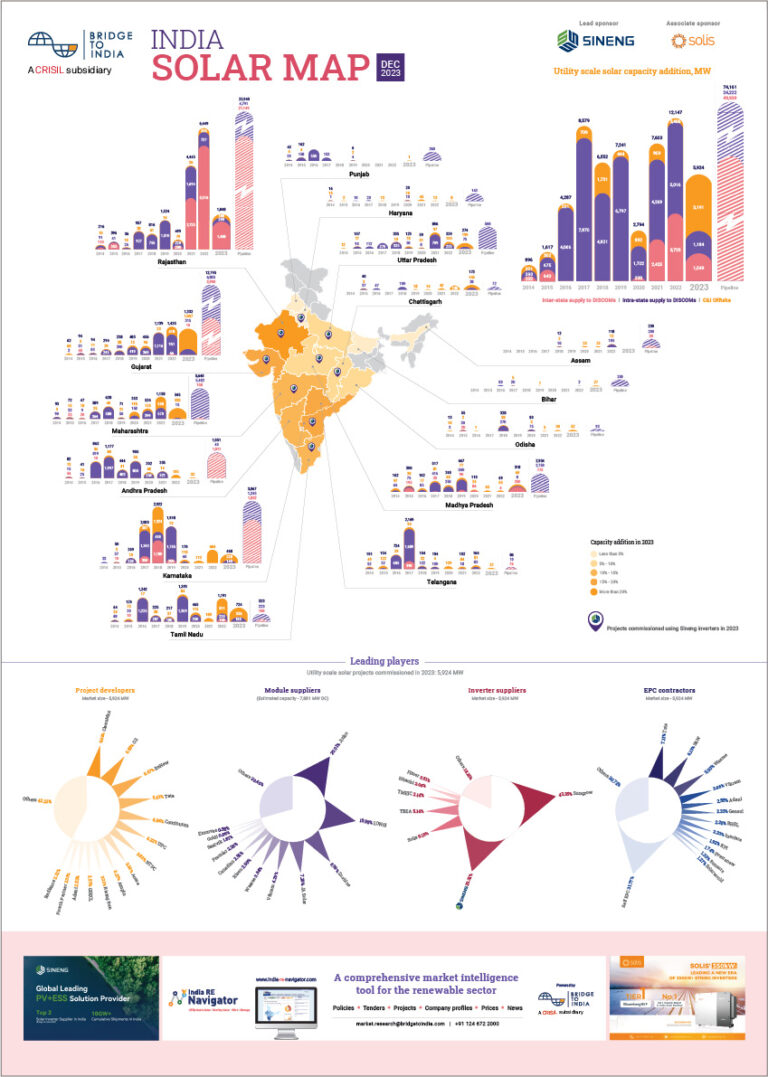Solar Energy Corporation of India (SECI) has released a tender to allocate 30% capital subsidy for 500 MW of residential and institutional rooftop solar projects across India (refer). This is by far the largest rooftop solar subsidy tender in the country till date. According to BRIDGE TO INDIA estimates, residential and institutional segments accounted for rooftop solar capacity addition of around 60 MW in the last year. The SECI tender envisages the entire 500 MW to be commissioned within 12 months of sanction essentially meaning that these market segments will need to grow by more than 8x, making the tender size extremely ambitious. The 500 MW tender capacity is split into 300 MW capacity for EPC installers and 200 MW for project developers. Further, the tender requires state wise bids where all winning bidders in a state would need to match the lowest bid (L1) for that state.
- The tender will serve to boost rooftop solar demand but design of the tender is very restrictive resulting in likely undersubscription
- Measures to promote aggressive bidding may be counterproductive particularly because of the very tight 12-month commissioning deadline
- It is not very clear why the residential segment has been effectively restricted to only 50 MW
Late last year, the government approved a capital subsidy of INR 50 billion (USD 750 million) as part of central government’s push for rooftop solar (refer), which has been struggling in comparison to the utility scale solar market. As part of this subsidy disbursement plan, MNRE would disburse subsidies through SECI, state nodal agencies and select banks (refer).
SECI will therefore be competing with other subsidy providers but the tender terms are very restrictive in our view. The subsidy will be provided to the lowest cost bidders who will also have to provide a bid bond of INR 1.5 million/MW (USD 23,000/MW), a performance bond of INR 2.25 million/MW (USD 34,000/MW), a service charge of 3.75% of the project cost and pay an additional bid processing fee of over INR 17,000 per states that they want to participate in. SECI will disburse 20% subsidy at the time of commissioning with balance 10% provided one year after commissioning. The subsidy also only available to projects using modules that are made in India. As the subsidy scheme requires using only domestic modules (extra cost of 6-10%), it means that the bidders will lose a significant share of the subsidy gain by way of extra costs.
As against this, a customer can receive the entire 30% subsidy under the same central government scheme at the time of commissioning from a state nodal agency.
The tender requirement to commission the entire allocated capacity within 12 months (or face penalties) is also harsh in view of the small market size at present and significant delays observed in net-metering approvals across India.
Finally, a very large part of the tender, 450 MW, is reserved for project sizes greater than 25 kW meaning that only 50 MW has been set aside for residential and SME customer segments. The rationale for doing so is not very clear as these segments are estimated to be as big in size as the institutional market.
Overall, this tender should act as a catalyst for the residential and institutional segments of the rooftop solar market but the tender design has lot of scope for improvement. Unless some of the conditions are relaxed, we anticipate that the tender subscription would be very low for the institutional market segment.












